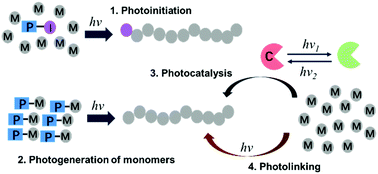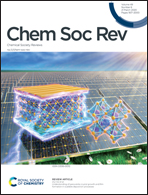Recent advances in light-regulated non-radical polymerisations
Abstract
Light is one of the non-invasive stimuli which can be used in the spatiotemporal control of chemical reactions. Over the past decade, light has found wide applications in polymer science such as polymer synthesis, release of small molecules from polymers and polymeric photosensors etc. Reviews on light-regulated polymerisations have predominately focused on the free radical process. However, the marriage of light to non-radical polymerisations, e.g. ionic, ring-opening, metathesis, step-growth and supramolecular photopolymerisations, has also spurred tremendous research interest to develop materials. These kinds of non-radical photopolymerisations, compared to the free radical approach, are advantageous in overcoming oxygen inhibition, accessing novel polymer structures and fabricating degradable and dynamic polymers. The relevant light-regulation techniques involved in these polymerisations are usually based on photolinking reactions and photoactivation of latent species. These species produce initiators, catalysts or monomers upon light irradiation to manipulate polymer formation. These techniques have been successfully implemented to adapt conditional polymerisations under light, discover novel polymerisation methods and precisely control polymer structures. This review aims to highlight the recent progress in light-regulated non-radical polymerisations in the development of polymerisation techniques as well as the applications in materials science, emphasising the remaining challenges and promising perspective in the relevant fields.



 Please wait while we load your content...
Please wait while we load your content...